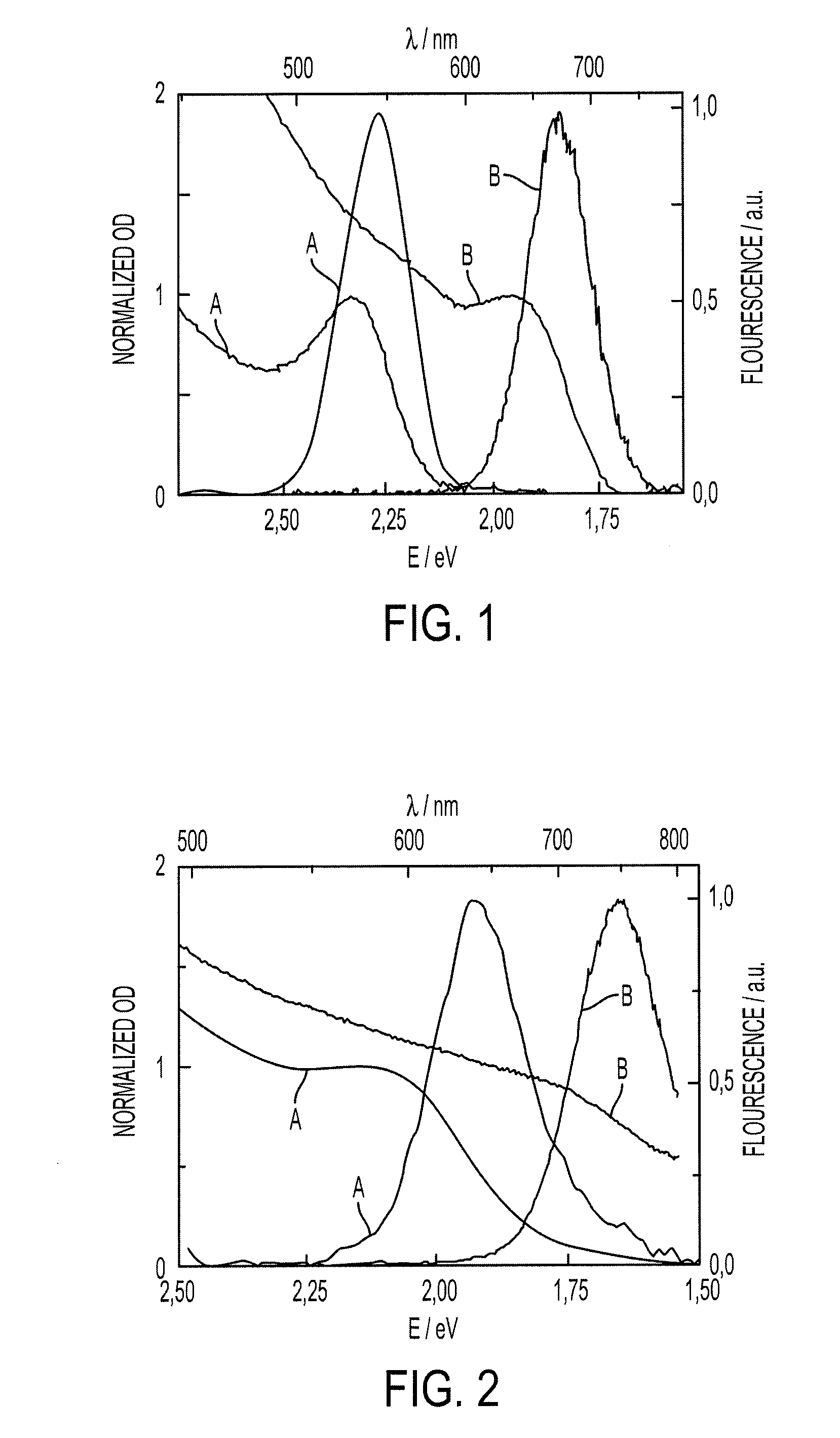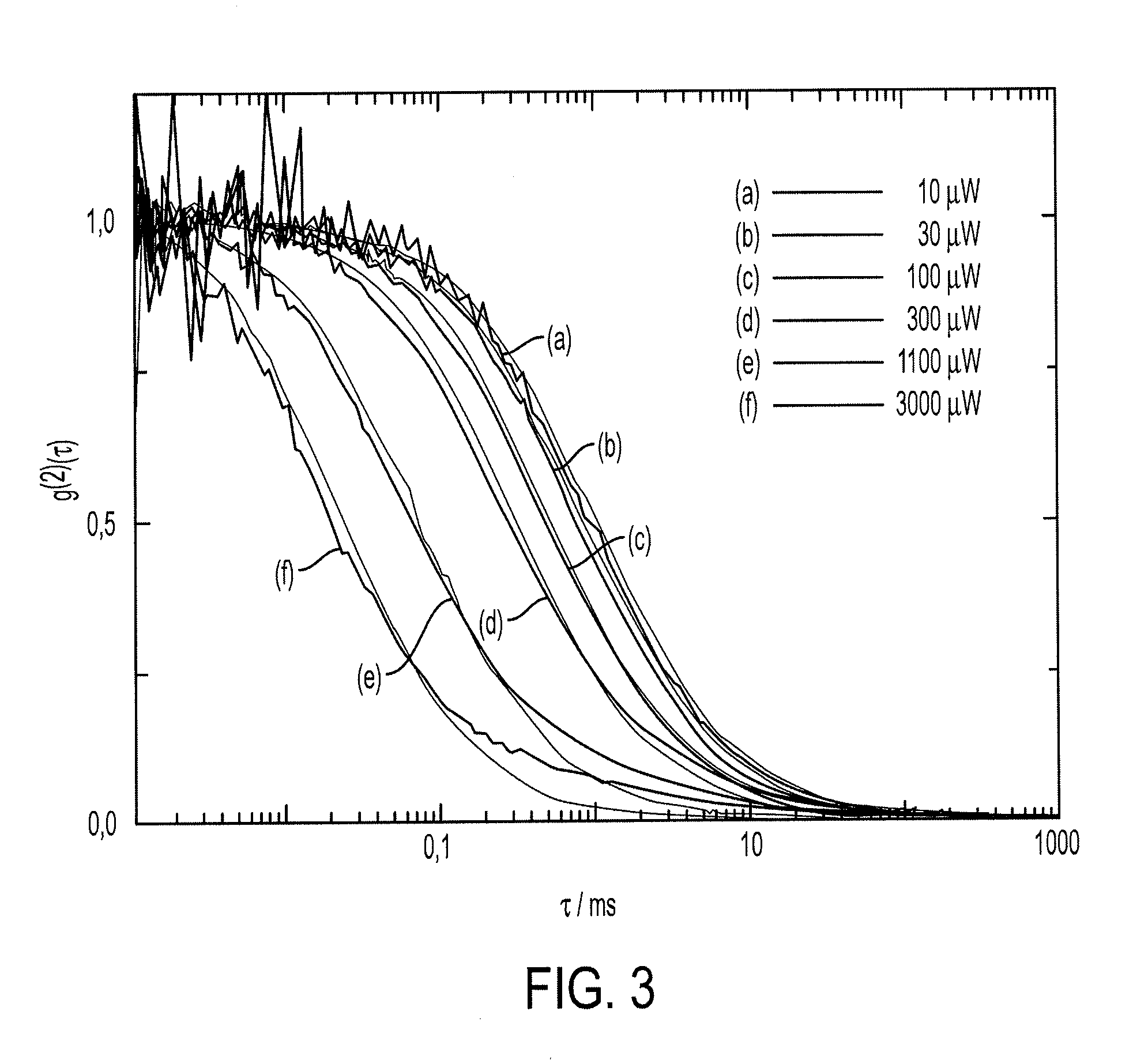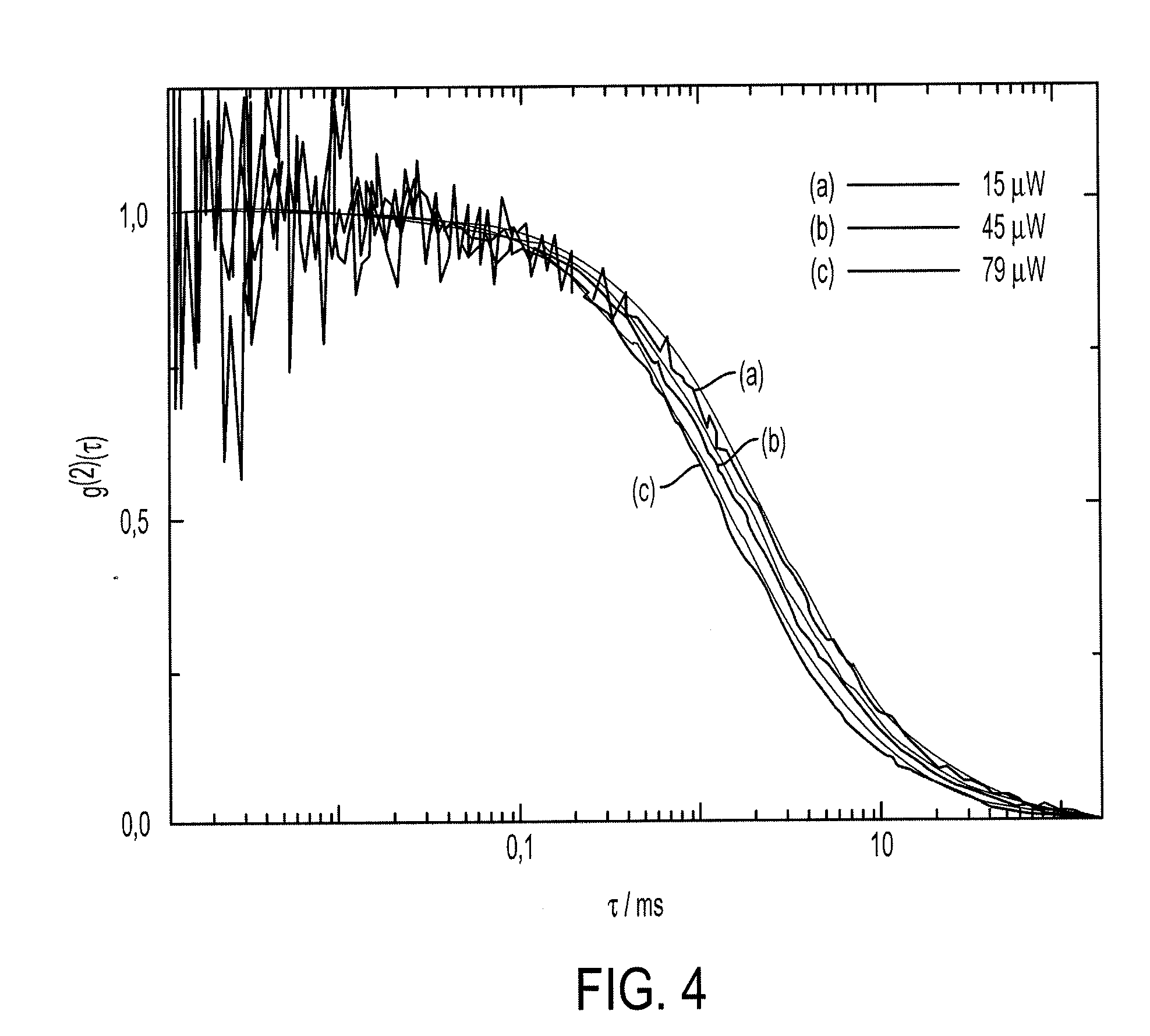Hybrid synthesis of core/shell nanocrystals
a nanocrystal and hybrid technology, applied in the field of nanocrystals, can solve the problems of reducing quantum yields and more possibilities for quenching effects, ncs are not exceptionally photostable, and ncs are not stable in biological environments, so as to achieve high quantum yields, high quality of particles, and high resistance to oxidation and photobleaching
- Summary
- Abstract
- Description
- Claims
- Application Information
AI Technical Summary
Benefits of technology
Problems solved by technology
Method used
Image
Examples
Embodiment Construction
[0023]The present invention involves a method for making core / shell nanocrystals where the core is initially made in aqueous solution according to known procedures that include capping or passivating the surfaces of the cores with a stabilizing agent, such as short chain thiol groups. The water soluble capped-cores are then treated with a sufficient amount of a solubility agent, according to known procedures, to form a nanocrystal precursor that includes a core having a surface that includes a sufficient amount of the solubility agent to render the nanocrystal precursor soluble in organic solvents. The nanocrystal precursor is then dissolved in an organic solvent and treated with a sufficient amount of an inorganic capping agent, in accordance with known capping methods in organic solvents, to form the final core / shell nanocrystal.
[0024]The cores of the nanocrystal precuror may include any of the semiconductor materials that are amenable to synthesis by known water-based core format...
PUM
| Property | Measurement | Unit |
|---|---|---|
| diameter | aaaaa | aaaaa |
| sizes | aaaaa | aaaaa |
| sizes | aaaaa | aaaaa |
Abstract
Description
Claims
Application Information
 Login to View More
Login to View More - R&D
- Intellectual Property
- Life Sciences
- Materials
- Tech Scout
- Unparalleled Data Quality
- Higher Quality Content
- 60% Fewer Hallucinations
Browse by: Latest US Patents, China's latest patents, Technical Efficacy Thesaurus, Application Domain, Technology Topic, Popular Technical Reports.
© 2025 PatSnap. All rights reserved.Legal|Privacy policy|Modern Slavery Act Transparency Statement|Sitemap|About US| Contact US: help@patsnap.com



